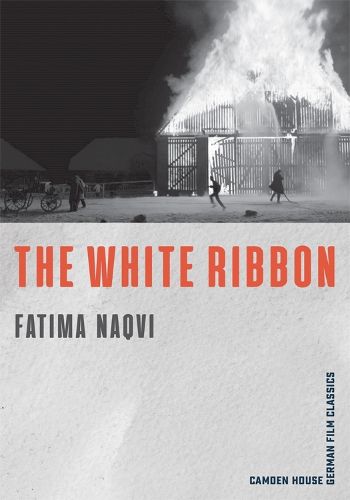Readings Newsletter
Become a Readings Member to make your shopping experience even easier.
Sign in or sign up for free!
You’re not far away from qualifying for FREE standard shipping within Australia
You’ve qualified for FREE standard shipping within Australia
The cart is loading…






White ribbons and black pedagogy - Michael Haneke’s award-winning film The White Ribbon (2009) is a multilayered reflection on purity, ideology, violence, and child rearing. In this tense black-and-white whodunit, mysterious events occur in a small town on the German-Polish border in 1913-14. A tripwire fells the doctor’s horse; a farmhand’s wife falls through the floor of a shed; a barn goes up in flames; the baron’s son is terribly beaten; a girls takes claims to clairvoyance; a mentally disabled boy is tortured and maimed. While the film unfolds on the eve of the First World War, the violence evokes other historical moments: the breakup of the multi ethnic Austro-Hungarian Empire, the rise of National Socialism, the emergence of 1960s German terrorism, and religious fundamentalism post 9/11.
Fatima Naqvi’s book looks at Haneke’s technique of combining various histories in the digital era. It also reflects on the guise of literariness and historical authenticity in which the director clothes this fictional film. It meditates on the film’s inscription techniques and its ability to appeal to international audiences. Naqvi shows that The White Ribbon bespeaks a certain historical translatability into historical and aesthetic contexts outside of Germany-in marked contrast to the historical specificity it conveys on a surface level.
$9.00 standard shipping within Australia
FREE standard shipping within Australia for orders over $100.00
Express & International shipping calculated at checkout
White ribbons and black pedagogy - Michael Haneke’s award-winning film The White Ribbon (2009) is a multilayered reflection on purity, ideology, violence, and child rearing. In this tense black-and-white whodunit, mysterious events occur in a small town on the German-Polish border in 1913-14. A tripwire fells the doctor’s horse; a farmhand’s wife falls through the floor of a shed; a barn goes up in flames; the baron’s son is terribly beaten; a girls takes claims to clairvoyance; a mentally disabled boy is tortured and maimed. While the film unfolds on the eve of the First World War, the violence evokes other historical moments: the breakup of the multi ethnic Austro-Hungarian Empire, the rise of National Socialism, the emergence of 1960s German terrorism, and religious fundamentalism post 9/11.
Fatima Naqvi’s book looks at Haneke’s technique of combining various histories in the digital era. It also reflects on the guise of literariness and historical authenticity in which the director clothes this fictional film. It meditates on the film’s inscription techniques and its ability to appeal to international audiences. Naqvi shows that The White Ribbon bespeaks a certain historical translatability into historical and aesthetic contexts outside of Germany-in marked contrast to the historical specificity it conveys on a surface level.